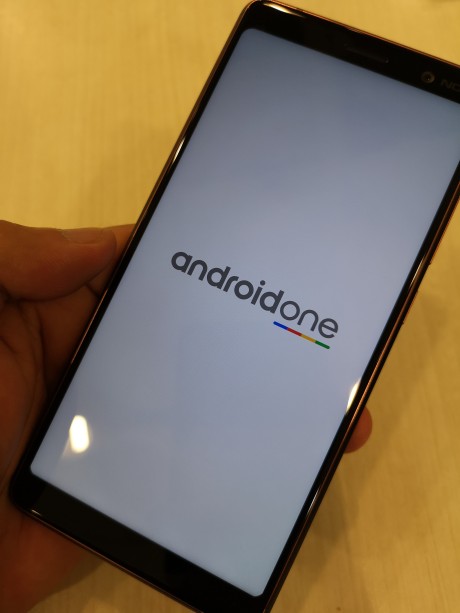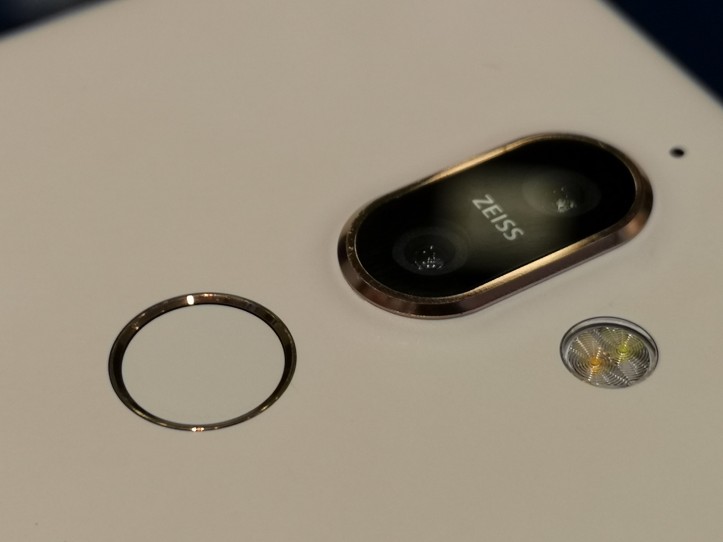For the past years, I have been subjected myself quite positively with a lot of phones. Some are hits and some are, well, just short of the bull’s eye. I don’t envy the engineers at these phone companies at all. The marketing guys got a wind of what the consumers want (or so they think) and then put a list of things that hope that the engineers can make a block of something into bars of gold to be sold off at a high price.
The reason why I write this post is to help those who followed my blog to understand what I think is important to consider when buying a new phone. I must say I wrote this from the point of a pragmatist, i.e. I will get phones that will give me the maximum bang for my bucks.
In no particular order do I put any factor as the most important. When doing my reviews there are combinations of functions and features that will come together to provide a value proposition to the consumer and I have to decide if the price being charged is fair.
I just hope this small article will help in organising your thoughts a bit and match your requirements to the smartphone being offered, hopefully within your budget as well.

The Operating System
We know there are two major operating system for phones now (there are many more out there actually) – Android and iOS. iOS need not say much because there is always one version, Apple’s.
For Android is also quite clear-cut. I split the Android OS into two types – the manufacturer and Google. In fact, manufacturer’s Android OS has the same underlying OS as Google just that they have their own way to present settings and icons. Some have app tray/drawer such as Samsung and some don’t like Xiaomi. Some like Huawei gave options to choose.
I personally prefer to have Google’s version of Android. Free from all the unnecessary tweaks to the settings page and on top of that, whenever Google has an update for the OS, those who own phones under the ANDROID ONE program will get the updates first. The other way is to get the Pixel phones directly from Google but it is not cheap (actually to me is carrot head chop and sliced).
Besides getting timely updates, there is a free Google online storage for your photos at high resolution too (note that it is not at full resolution and only in JPEG).
TLDR: All the phone’s OS are the same basically. And there is not much difference between Android 7 and 8 in terms of practical usage. Getting security updates to me is important so having phones under the Android One program is a better bet and having a clean, native feel to the OS is a side perk that I truly enjoy. All good manufacturers should have an Android One version of their flagship. REALLY!
Processors and RAM
Processors are like the brain of ours. It is needed to start an app and make things work for you in the smartphone. It works hand-in-hand with the Random Access Memory or RAM to run these apps efficiently.
The apps these days have already reached a level of maturity that will require less of the processor power except for poorly written apps. Apps such as Facebook, Instagram, WhatsApp, LINE, WeChat can now be supported by numerous processors, from the cheapest to the most expensive.
What may need a bit more processing power will be Artificial Intelligence although most current processors right now are doing a bit of AI work and only a handful of AI centric processors such as the Samsung Exynos 9810, Huawei Kirin 960/970 and Snapdragon 845/835/821/820/660 are designed for AI processing with the NPU or Neural Processing Unit. But I must highlight that there are not many AI-enabled apps that can maximise the potential of these processors as yet and so mid-range processors such as Snapdragon 660 should be enough for a lot of users.
If a mobile phone is slated as High-End or Ultra Premium, I will look for the AI enabled chipsets. Most people will be okay with mid-range processors like the Snapdragon 660.
As for RAM, anything that is 4GB and above will be enough for the next 2 years. RAM is important if you are running multiple background apps. More RAM usually means you can run more apps in the background so that you will be notified of any activities or updates while using the phone. 6GB maybe an overkill for most people but I will suggest getting 6GB RAM only when you need to do imaging work while on the go.
TLDR: Snapdragon 660 + 4GB (Mid-Range) / Snapdragon 845 + 6GB (High-End). Both good in May 2018.

Battery (mAh)
The battery is measured in milliAmpere-hour or mAh. The bigger the number the higher the power capacity. Everyone has different ways to use their smartphones and has different types of apps apart from the usual suspects Facebook/Instagram/Twitter/YouTube (FITY).
I would say that smartphones with at least 3000mAh should be sufficient enough to last for a day. If you have more than 3000mAh in your phone, have the latest Andriod OS version and yet have battery dying on you before the end of the day, it is time to uninstall some nonsense app that you have in your phone. And also learn how to switch off background running of the apps.
TLDR: 3000mAh and above. More the merrier.

Screen (Diagonal Size, Screen Ratio, Screen Technology)
These days the screen at Full HD resolution is more than enough for most users. Yes there are screens that comes with 4K but to maximise the screen sharpness of a 5.5-inch to 6-inch screen, 2K or QHD resolutions is enough. However after looking at Full HD+ screens for so long, I don’t think one is necessarily shortchanged.
And there is the screen ratio. These days most smartphones comes in 18:9 ratio when old smartphones used 16:9 ratio screens. The screen size, measured diagonally, maintained at around 6-inch size but the viewable YouTube screen has become smaller because those clips comes in 16:9 ratio. Then again, the viewing size is still quite big for most people.
And the last thing to look at are OLED versus IPS LCD screens. Until the iPhone X, all the iPhones use LCDs and Samsung uses OLED. I won’t go into specifics but in terms of colour reproduction and screen brightness, OLED definitely win over LCD. However for daily use, both LCD and OLED are sufficient to easily read texts and watch movies with and most will be none the wiser.
For me, colour accuracy is more important and that would mean having the screen at maximum brightness and the colours that I am seeing should match what I see in real life. That would mean a calibrated screen and usually smartphone screens are not calibrated to be used meaningfully as a professional tool.
Some manufacturers like to over saturate and over contrast their screens to make their phones attractive to potential buyers. Hence a screen performance is really subjective but Full HD should be enough for now and the foreseeable future.
TLDR: LCD (Mid-Range) or OLED (High-End) are both acceptable. The minimum now should be Full HD (1080 pixels long on the short side of the screen). Would be nice to have sRGB with full color gamut support.

Security Features (Fingerprint /Facial Recognition)
The new phones come with security features that are useful in a lot of ways especially when using it to authenticate the user accessing the phone, using financial apps to manage bank accounts and paying for purchases.
In this case, I would definitely look out for fingerprint readers. The location of such readers is not exactly an important factor but will affect the usability and the aesthetic of the smartphone.
Face ID or Facial Recognition is the new way of unlocking the phone but is not as secure as the fingerprint and I would not make it an important consideration looking at new phones.
The location of the sensor reader is an important consideration. I prefer to have it at the back so the screen size can be maximised along with the use of the notch. It actually makes it easier to hold the phone as compared to the bottom of the screen. I would not change my mind until Smartphones have under-display fingerprint reader such as the Vivo X21 that will provide a better grip with doing a fingerprint authentication.
Smartphones that have the fingerprint readers next to the camera lenses and not the bottom ought to be shot.
TLDR: Location of Fingerprint Sensor is a consideration and can be subjective but definitely not in a place to smear the camera lenses (yes looking at S8!).

The Notch, The Slot and The Port
The notch happens because Apple knows iPhone fans will just accept what they put out. For Android users, blindly copying Apple is definitely not the reason why we buy Android in the first place.
We love our Androids specifically because we love our removable batteries, our MicroSD card expansion option, Dual-SIM card slots and the 3.5mm stereo jack.
These are ‘features’ that make Android phones, Android. Even if the Notch has a useful reason behind it, it just belittles the Android fan’s idea of a perfect smartphone.
Why the Notch? Putting aside the fact that Apple started the ‘notch-gate’, the notch actually maximises the usable screen estate for the smartphone. If you observe, there’s always this empty space between the top left and right corners of the screen between the notification icons so pushing the speaker and the front-facing camera into the void frees more screen space. I know some people will hate the notch (I did but I rationalise it away) and having the phone to hide it using a black bar running across the top of the screen is a good option to have.
The MicroSD slot is actually the main reason why we love our Androids over iPhones. Apple charges exorbitantly for the use of onboard storage space even a mere 64GB more will mean an increase of a couple of hundreds of dollars more on the price tag. The MicroSD card slot is our go-to solution when people like me, love to shoot tons of photos (I have 3 ‘tons’).
Of course, the usage of a cheap MicroSD card WILL create performance issues for the phones and gradually phone manufacturers want to eradicate it to make the phone speedy. The solution is to get people to buy a fast MicroSD card instead of taking it out altogether. This is one of my pet peeves of the new phones actually.
The other pet peeve now is the lack of a 3.5mm audio/stereo jack/port. Yes, there are a lot of Bluetooth headsets so it shouldn’t be that bad. However, having a wireless set meant an additional thing to charge at the end of the day and for someone like me who travels, a wired headset makes life easier because I can prolong my phone’s battery life while watching Netflix on budget flights.
TLDR: MicroSD Card Slot + 3.5mm Headphone jack FTW. Notch? Give option to turn it off please!

The Camera
Yes, this is something I would say most people shouldn’t be too concerned but are concerned anyway even though they hardly take any shots apart from some snapshots and selfies. If you are really a narcissist then the selfie camera is your much-loved smartphone function.
For me, I am always looking for ways to take a good photo without bringing out the gear. Smartphone cameras did improve to the point that it has become much more fun to experiment with and yet have enough image quality to really feel accomplished with the images one took from the phone and share it out.
For most people, I would say the camera shouldn’t be at the top of the list when determining if one should buy the more expensive phone over a mid-range or budget phone. It all depends if you like photography as a hobby and is serious about it, which vast majority of people don’t.
That being said, I am perfectly fine if people want to buy the best smartphone with the best camera but I must say one should manage their expectation that smartphone is just a tool and requires the user’s skills and knowledge to take a good shot. That takes practice and commitment to be better at the craft, including buying tripods for the smartphone or even filters to control exposure.
Besides, physics do play a part when it comes to capturing good images. A bigger lens with bigger sensor creates out of focus, beautiful background pretty easily for those professional portrait shots. For the smartphone camera, it has to rely on algorithms to blur the background artificially. When one sees a naturally created bokeh (blur background), it is really tough to accept artificially created ones.
I did not say things will not improve in this area when Huawei-Leica smartphones are performing beyond expectation just that we should not say “Smartphone is good enough to beat DSLR” when one has not fully appreciated the peak performance of a proper DSLR or mirrorless camera in the hands of a good photographer.
If one has seen a proper taken shot from a smartphone taken by a professional and use it to compare it with a bad photo taken with a DSLR by an untrained person, then the comparison is not fair and to say “Smartphone is good enough to beat DSLR” just quickly show one’s ignorance.
For those who know me doing reviews, I have done much to maximise the potential of the smartphone I am testing. I owe it to the engineers to do so. Some smartphones are really doing a lot of things that DSLR/Mirrorless are not doing, like Huawei’s P20 Pro night shot mode is a very good example. It takes Photoshop techniques and shoehorned it into the smartphone’s camera processor and make it usable with a 4-second handheld shot. It is literally a miracle. But is that enough to replace the DSLR/Mirrorless fully? No, it isn’t and one shouldn’t expect it to be.
If one is not really into photography, then most of the phones out there can take decent photos in daytime and in good light but will struggle when it comes to low light and night shots. And yes, low light and night time shots really make or break the smartphone camera and is the deciding factor for now.
The phone manufacturers are now using the camera to differentiate themselves from the competition. As a keen photographer, I am certainly happy that much progress is done in this area but as a smartphone reviewer, I would say a smartphone is still a Smartphone first, a camera second.
TLDR: A Smartphone is a computer first and a camera second. If you are not a keen photographer or not really into selfie taking, then camera performance shouldn’t be the main reason for getting an expensive smartphone.
If you want the specs to look out for – 27mm or shorter focal length for the main camera with a f1.8 or wider (smaller number) lens to help in low light shooting. The secondary camera should be wider as I find that more useful with better image quality than a zoom. Huawei P20 Pro, to be fair, has done tremendously well to have good zoom on a phone too!
Want to properly compare a phone camera? Do a night shoot test, handheld.

In Summary
here are the things one should look out for in the specification list (useful for marketers and PR people with Smartphone manufacturers as their clients too). The information should be readily available on the official product page (yes I was surprised that some brands actually missed all these important things).
- Processor Used
- RAM
- On-Board Storage
- Storage expansion options (MicroSD card)
- Battery power (mAh)
- Screen Size (5.5-inch and above), Resolution (1080 minimum) and Ratio (x:y)
- Screen Technology Used (LCD or OLED)
- 3.5mm Jack (Yes/No)
- Bluetooth audio support codecs and Bluetooth version used
- Camera sensor (colour or monochrome) and lens (Focal length equivalent to 35mm full frame camera in ‘mm’ AND the maximum aperture in ‘f’). Look for information if they are the main camera, secondary camera or front-facing/selfie camera. If there are 3 cameras, then it should have 3 sets of sensor details, lens focal length and lens aperture information
- Android One?


[…] do have other articles looking at this with a Q&A article and I will use the criteria I have shared about looking at new phones. Below is the table used in the Q&A article and I will […]
LikeLike